
Andriy Ozeychuk, Director of the engineering and construction company Rauta, Chairman of the Board of Directors of the Ukrainian Steel Construction Center Association
What does Regulation 305 provide for?
On January 1, 2023, the Law “On placing construction products on the market” came into force in Ukraine, implementing the provisions of EU Regulation 305/2011 and significantly changing the requirements for the safety and quality of construction materials. By January 1, 2026, all Ukrainian producers must fully adapt to the requirements of the new law.
Cabinet of Ministers Resolution No. 426 extends the law to almost all construction products, from fasteners to chimneys.
New declaration system in Ukraine
The main difference between the new regulation and the previous one, which has been in effect since 2006, is the reference to European standards for the production of construction materials. From now on, Ukrainian producers must declare that their products comply with European standards and bear full responsibility for their quality.
Previously, the quality of products was confirmed by certificates in accordance with Ukrainian standards or technical specifications, which allowed for low-quality products. It was enough for manufacturers to register their own TUs or obtain a certificate from an accredited organization, relieving them of much of the responsibility for the characteristics of materials.
With the adoption of the new law, manufacturers are required to issue declarations of conformity based on the requirements of harmonized European standards. They must also ensure continuous quality control in production and take full responsibility for the declared characteristics.
Benefits of implementing Regulation 305
– Improved quality of building materials. New requirements oblige manufacturers to comply with European standards, which guarantees a higher level of product quality and safety.
– Protection of consumer rights. The introduction of a unified quality control system and liability mechanism will provide buyers with clear selection criteria and tools to influence unscrupulous producers.
– Access to the EU market. Thanks to a unified certification system, Ukrainian companies will be able to export their products to Europe without additional testing and conformity assessment procedures.
– Transparency of the construction materials market. Declarations of conformity will have to be registered in the Unified State Electronic System in the field of construction, which will promote openness and trust between producers, consumers and government agencies.
Risks of implementing Regulation 305
– Increased competition. European producers will be able to enter the Ukrainian market freely without additional certification, which may put pressure on national producers.
– Closure of some enterprises. Companies with outdated equipment may not be able to meet the new standards, forcing them to invest in modernization or cease operations. According to expert estimates, this risk will affect no more than 1% of Ukraine’s production capacity and will not have a significant impact on the industry.
Changes in European legislation
On November 27, 2024, the European Union adopted a new Regulation No. 2024/3110, which replaces the previous Regulation No. 305/2011. It entered into force on January 7, 2025, with a 1-year transitional period. It was Regulation 305/2011 that was the basis for the Ukrainian law “On placing construction products on the market”.
The main changes of the EU Regulation 2024:
– Increased environmental requirements. Manufacturers are obliged to assess the life cycle of building materials and their carbon footprint, which will promote the reuse and recycling of resources.
– Introduction of digital product passports. The Ukrainian law partially takes this provision into account, as it requires registration of declarations in the Unified State Electronic System in the field of construction.
– Simplification of requirements for small and medium-sized businesses to provide construction products on the market.
– Strengthening market surveillance. The regulatory authorities have been given more powers to check product quality and mechanisms to quickly withdraw non-compliant products from the market.
Conclusion.
The transition of Ukrainian producers to work in accordance with the requirements of the new law is an important step in the EU’s approximation. The new rules will encourage businesses to improve their production processes and invest in modernization, which will improve product quality and expand opportunities for domestic producers in the European market.

One of the criteria for participation in state reconstruction programs should be their compliance with the new law “On the Placing of Construction Products on the Market”, also known as EU Regulation 305, says Andriy Ozeychuk, director of the engineering and construction company Rauta and chairman of the board of directors of the Ukrainian Steel Construction Center Association.
“The implementation of the requirements of Regulation 305 will improve the quality of Ukrainian construction products to the European level and create prerequisites for Ukrainian producers to participate in international tenders for the reconstruction of Ukraine and open up opportunities for exporting construction materials to the EU market,” he explained during the roundtable discussion ”Public Partnership and Investment in Territorial Recovery. How to Involve Ukrainian Construction Materials Producers in the Reconstruction Process” at the Interfax-Ukraine press center on Friday.
Mr. Ozeychuk emphasized that the state should promote more active involvement of Ukrainian producers in the recovery process and create the preconditions for the development of the construction industry.
According to him, there are currently no designated conformity assessment bodies for several product categories to fully implement Regulation 305. Another pressing issue is the possibility of recognizing the test results of EU laboratories in Ukraine, which will avoid the procedure for obtaining a certificate of stability of indicators.
He also mentioned the persistence of corruption in tenders, when the terms of reference are prescribed for the products of a particular manufacturer.
At the same time, he believes it is crucial to eliminate non-market pricing, when the real wages of construction workers differ significantly from those that can be agreed upon by the regulatory authorities; to reduce the risks of non-payment for work performed and delays in financing.
Mr. Ozeychuk noted that the state should take a systematic approach to restoring the war-affected industry. It is necessary to support the creation of new production facilities for construction materials that are not produced in Ukraine or their production volumes are insufficient for potential recovery (European steel, thick plates, hardware, glass, insulation, membranes, etc.)
“It is important for the state to encourage European partners to involve Ukrainian producers in financing the recovery, rather than importing structures from the EU, as is sometimes the case now. (It should – IF-U) give preference to Ukrainian producers without limiting foreign suppliers of products and services, unless there is a full-fledged alternative in Ukraine. This is especially true for products that are equivalent in quality to their European counterparts,” Ozeychuk emphasized.
He pointed out that Ukrainian manufacturers of metal structures have sufficient potential for recovery and are already at the level of European ones: they design according to Eurocodes, work according to modern EN 1090 standards and use BIM technologies, the expert explained.
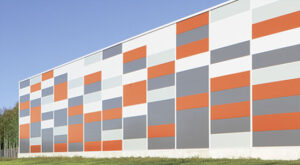
Ruukki Energy sandwich panels were used for the construction of the NOVUS Logistics Center, the first BREEAM-certified food logistics complex in Ukraine, the Rauta press service reports.
“Especially for the logistics terminal, Rauta specialists, which is the exclusive importer of Ruukki sandwich panels in Ukraine, have developed a project of enclosing structures with unique nodes that provide maximum airtightness and significant cost savings during the operation of the facility,” said Rauta Director Andriy Ozeychuk.
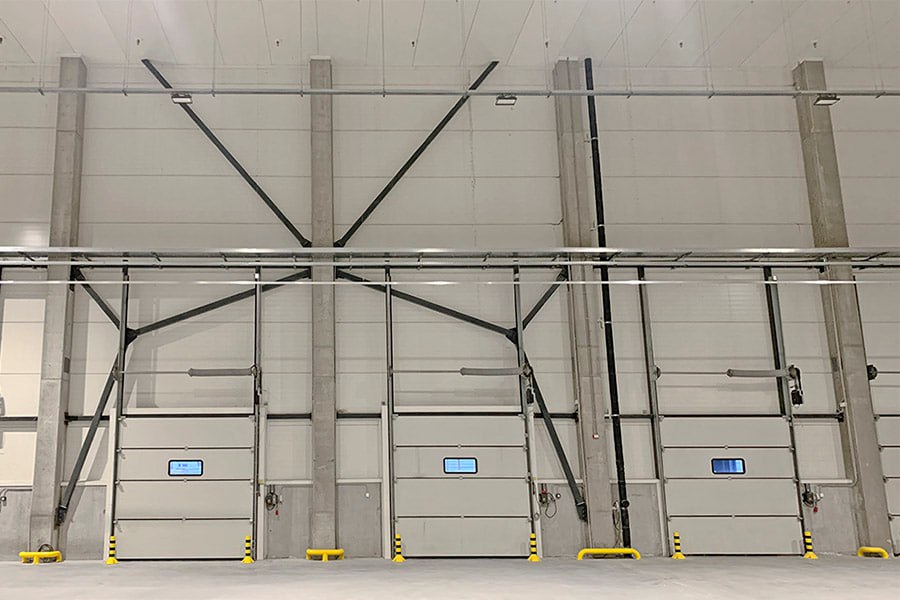
As reported, in the spring of 2024, Novus Ukraine LLC, which operates the Novus hyper- and supermarket chain, launched the NOVUS Logistics Center in Kyiv, built according to the BREEAM green building principles with loans from the European Bank for Reconstruction and Development. The complex was BREEAM certified at the design stage, and now, after commissioning, the company is preparing the facility to receive the international BREEAM certificate for new buildings, rating Good.
With an area of more than 50 thousand square meters and a height of 15 meters, NOVUS Logistics Center is designed for 5.2 thousand pallet spaces and has 18 temperature zones – from -30 to +24 degrees Celsius.
According to Konstantin Parshin, Head of Operational Logistics at NOVUS, thanks to the use of Ruukki sandwich panels, the temperature inside the main room does not fall below the set 15 degrees in winter and does not rise above 20 degrees in summer.
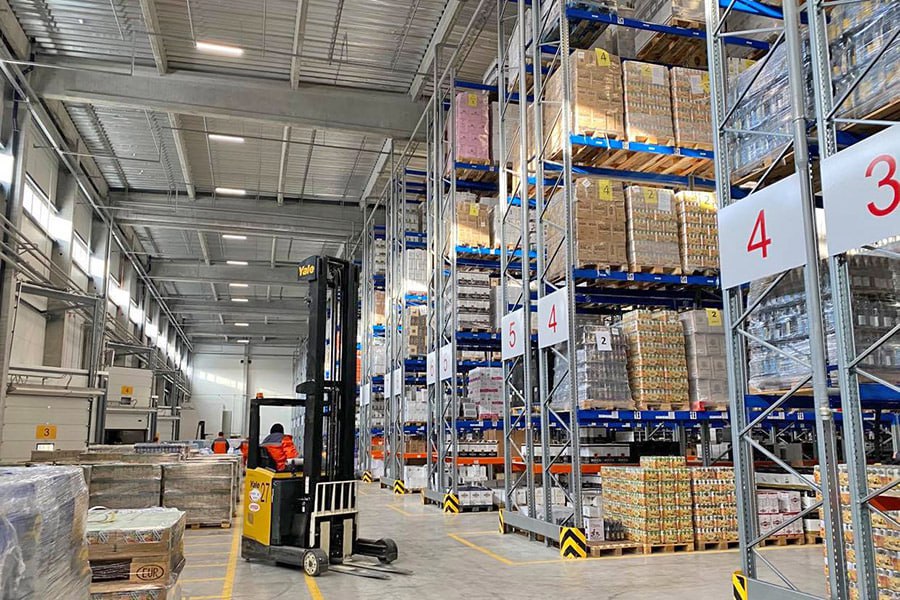
The release emphasizes that the use of Ruukki Energy sandwich panels ensured the building’s airtightness up to q50 = 0.01 m3/h∙m2 and thermal resistance of structures up to R = 7.47 (m2∙K)/W, which are the best indicators for cold storage warehouses.
Founded in 2014, Rauta Group LLC (Rauta) is an engineering and construction company engaged in the design, supply and installation of sandwich panels, ventilated facades and prefabricated buildings. It is the exclusive importer of commercial products from the Finnish concern Ruukki to Ukraine, as well as the developer of a number of innovations that reduce the cost and time of construction.
CONSTRUCTION, NOVUS, OZEYCHUK, RAUTA, RUUKKI, SANDWICH PANELS
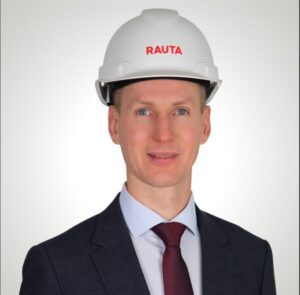
The use of Ukrainian-made sandwich panels increased by 15% in the first half of 2024, while sales of imported products decreased by 12%, Andriy Ozeychuk, director of the engineering and construction company Rauta, told Interfax-Ukraine.
“In the first half of 2024, the volume of the Ukrainian sandwich panel market in absolute terms amounted to just over 1 million square meters, which is similar to the figures for 2023. At the same time, the use of Ukrainian-made panels increased by 15%, while sales of imported products decreased by 12%,” he said.
Ozeychuk also emphasized the change in the structure of sandwich panels: their share of mineral wool is decreasing, while the demand for panels with PIR (polyurethane foam – a fire-resistant insulating material based on polyurethane) filler is growing, which has the highest thermal insulation properties and a lower price.
“From 2021 to 2024, the price in euros of PIR-filled sandwich panels decreased by 18%, while mineral wool-filled panels increased in price by 37%,” he said.
At the same time, the Rauta director stated that today the construction of new facilities is actively developing only in western Ukraine, while in other regions it is limited to spot projects and the reconstruction of destroyed buildings.
According to him, the main problem of the construction market, in particular the sandwich panel segment, is a large market decline of 60-70% compared to 2021. Most investors take a wait-and-see attitude and do not risk investing in new projects.
At the same time, despite the war risks, the owners of most of the destroyed commercial and industrial facilities have invested in their restoration to quickly restart their businesses, allowing them to continue to operate efficiently.
In particular, Rauta has implemented a number of large-scale restoration projects, including the Retroville shopping mall in Kyiv, the production shop of the Chernihiv Automobile Plant, and the Novus supermarket in Bucha (Kyiv region).
According to Ozeychuk, the industry’s acute problems are a shortage of personnel, especially among skilled laborers, as well as blackouts.
“For some positions, we have to look for specialists for several months, and sometimes train employees ourselves. That’s why salaries and, accordingly, the cost of construction are rising. Blackouts, which last from two to six hours a day, reduce the productivity of builders, increase the time and cost of construction by 20-40%,” he said.
According to his observations, the program for the restoration and protection of critical infrastructure facilities has the greatest impact among government programs.
“In general, by the end of 2024, we expect the sandwich panel market to remain at the level of 2023 with a possible growth of up to 10%,” Ozeychuk summarized.
Founded in 2014, Rauta Group LLC (Rauta) is an engineering and construction company engaged in the design, supply and installation of sandwich panels, ventilated facades and prefabricated buildings. It is the exclusive importer of commercial products from the Finnish concern Ruukki to Ukraine, as well as the developer of a number of innovations that reduce the cost and time of construction.
Source: https://interfax.com.ua/
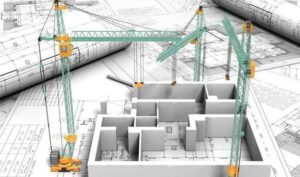
Commercial real estate restoration projects account for up to 20% of Ukraine’s construction market, Andriy Ozeychuk, director of Rauta engineering and construction company, told Interfax-Ukraine.
“Despite the military risks, the owners of most of the destroyed commercial real estate are investing in their restoration to restart their businesses, which allows companies to continue to operate efficiently. In particular, about 80% of commercial facilities destroyed during the full-scale invasion and located far from the war zone have already been rebuilt or are in the process of being rebuilt,” he said.
According to Mr. Ozeychuk, the figure is lower in the segment of industrial and warehouse buildings, at about 40%.
“For most of these facilities, the owners are looking for financing,” explained the Rauta director.
According to him, among the restoration projects Rauta was involved in were the Retroville shopping center (Kyiv), the production shop of the Chernihiv Automobile Plant, and the Novus supermarket in Bucha (Kyiv region).
Rauta’s experience in restoring commercial real estate shows that often an additional requirement of investors during the restoration of facilities is to improve their energy efficiency and architectural attractiveness, which allows them to optimize costs during the operation of buildings.
According to the World Bank, as of February 2024, Ukraine’s reconstruction needs were estimated at $486 billion, of which about 25% were commercial real estate.
Rauta is a leading provider of reliable construction solutions in Ukraine and the European Union.
According to Opendatabot, Rauta Group LLC was registered in Ukraine in 2014. Its authorized capital is UAH 388 thousand, and its revenue for 2022 is UAH 102.396 million.